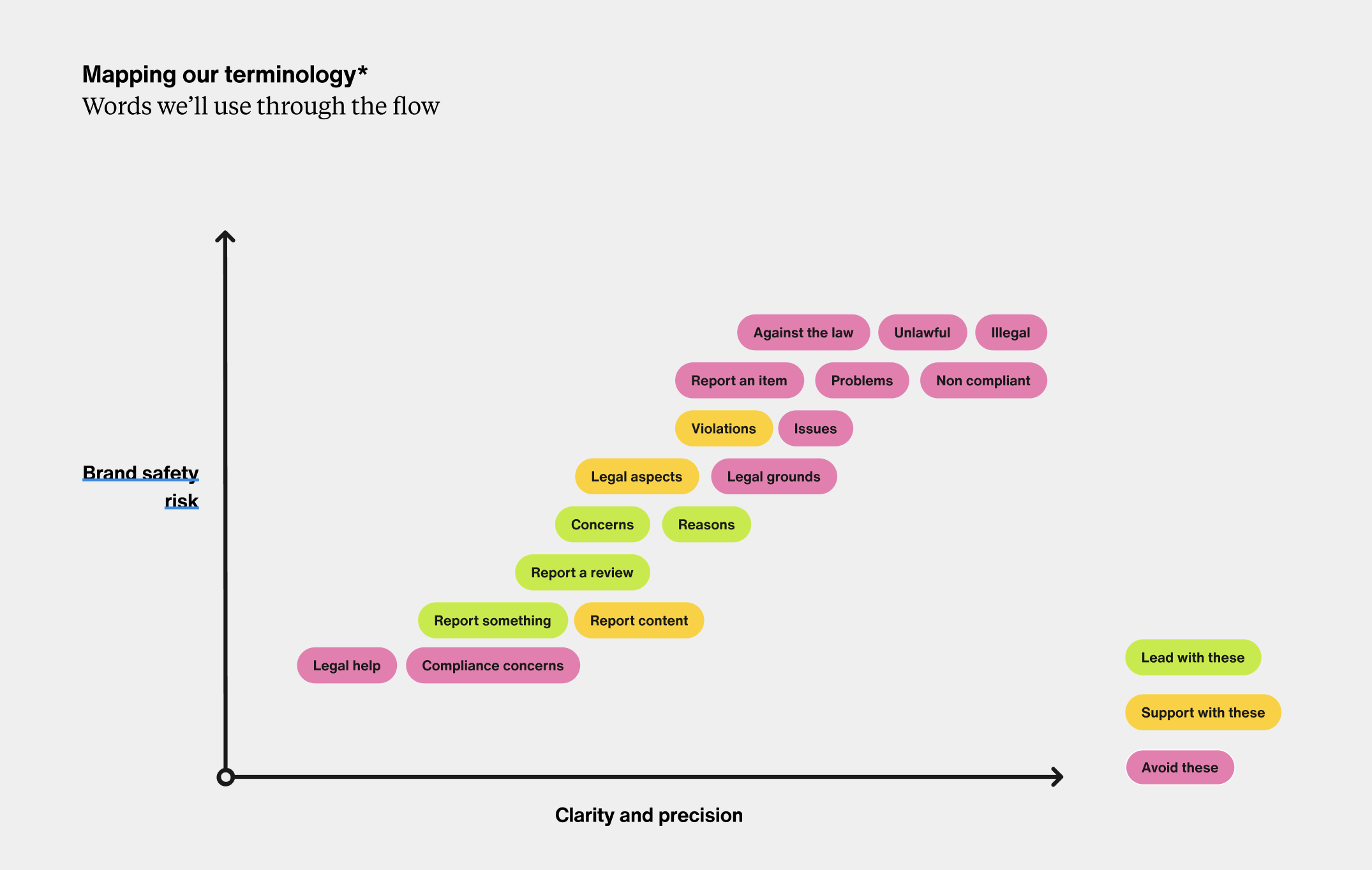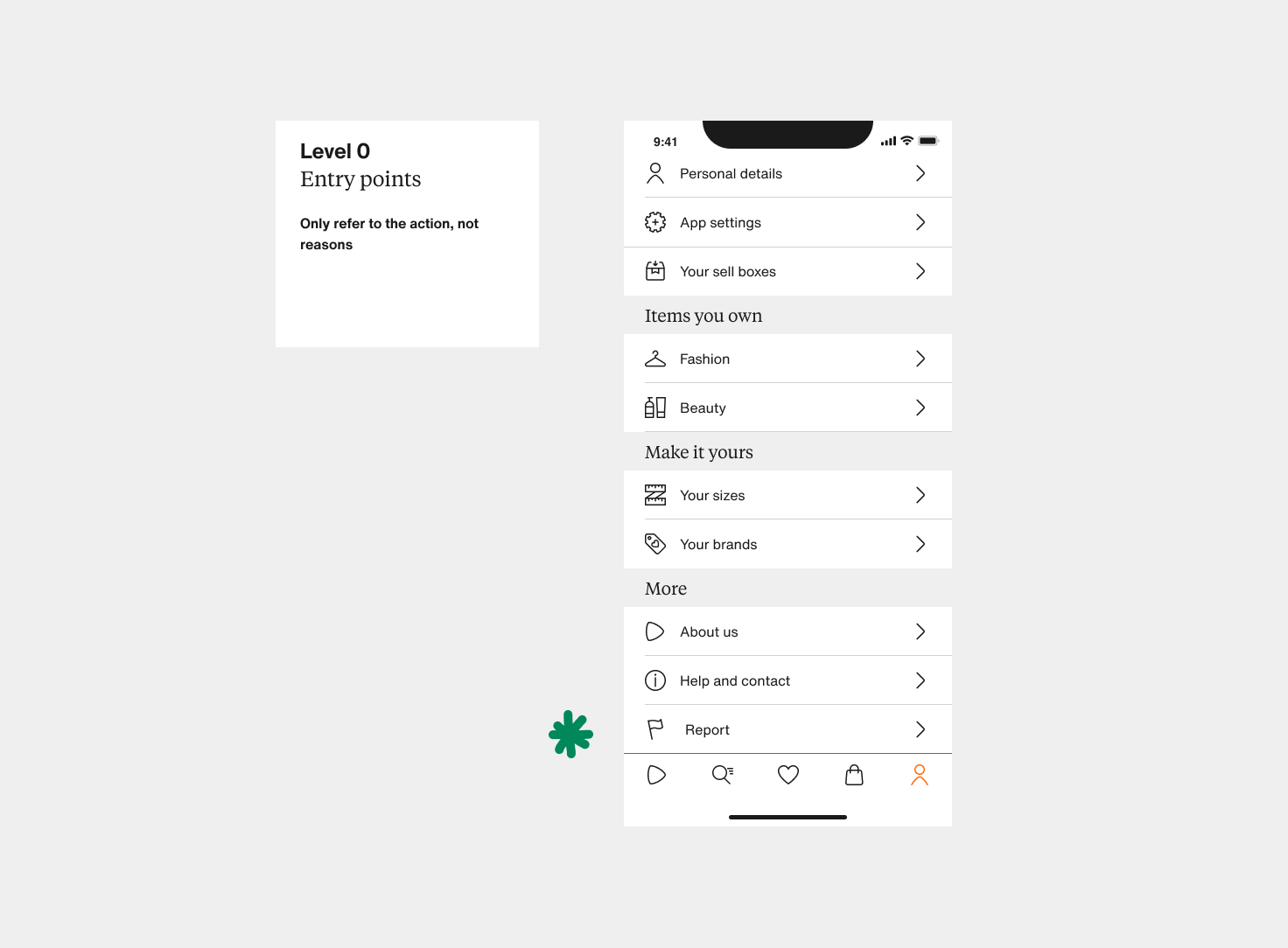REPORTING CONTENT ON ZALANDO
In 2023, the EU Digital Services Act required us to create a content reporting process.
With an immovable deadline, limited resources, and no precedents, it posed multiple risks — to brand safety and the overall customer experience.
Overview
Our challenge
Create a process to report content for legal reasons — without disrupting the CX or confusing users.
What I did
Design Lead for the project
Defined the CX goal based on legal requirements
Conducted industry benchmarking
Forecasted brand and CX risks
Mapped our terminology to balance competing risks
Developed a progressive disclosure flow to guide users without cognitive overload
Wrote conversational UX copy, turning legalese into accessible, user-centred language
Created principles and guidelines for quick iterations
Who I worked with
User research
Legal and compliance
Design and product leadership
Brand design team
Design systems team
Customer care
Program managers
Engineering (web, iOS, Android)
Localisation managers
Our solution
Applied a user-centred approach, in collaboration with legal teams
Ensured compliance while minimising brand and CX risks
Shipped a lean open-beta version
Created a framework to enable bi-weekly iterations
(Re)defining the goals
While the scope and requirements were defined by legal, I began by identifying the CX objectives.
Searching for precedents
I led a detailed benchmarking exercise, gathering insights and presenting them to stakeholders.
This helped us understand different mental models and align on our design principles.
Spotting risks
Analysing the benchmarking and user research, I forecasted the challenges that our design approach would need to address.
Weighing words
Balancing the conflict: legal clarity vs brand safety
Mapping word choices against the two needs
Workshopping which words we’d prefer, use if needed, or avoid entirely
Developing a lexical space, rather than rigid rules, to help localisation and scalability
Collab: Legal, Central Functions, Customer Care, Design
Starting simple
Making it easy to discover — when needed
Creating a 1-word entry point only about the action triggered (‘Report’)
Using an icon supported by user testing
Creating a scalable, identifiable pattern, without disrupting the CX
Collab: Design System, Product Management
Turning formal to normal
‘Translating’ legal language into conversational UX:
Distilling each category to explain users’ choices in simple terms
Using a Q&A format, with questions in second person (our voice), and answers in first person (user’s voice)
Framing choices as concerns (‘I think’) rather than legal-sounding accusations
Collab: Legal (Digital Law, Copyright Law)
Going step by step
Guiding users with progressive disclosure
Surfacing only the most relevant information at each step
Mapping the content design flow to calibrate across the journey
Setting sufficient context before introducing legal terms
Collab: Design, PM, Engineering
Bringing it all together
An intuitive, conversational experience that ensured safety and compliance.
Without compromising on brand voice and user-centred design principles.
Built to iterate
I created principles and guidelines to enable quick iterations based on A/B testing and performance.
This helped us meet the regulatory deadline while enabling us to test and learn, cutting user queries by 80%+ over two fast-follow iterations.
PREVIOUS
DESIGN PRINCIPLES | PRODUCT NARRATIVE | CONTENT STRATEGY
NEXT
BRAND VOICE | EXPERIENCE DESIGN | LEADERSHIP























